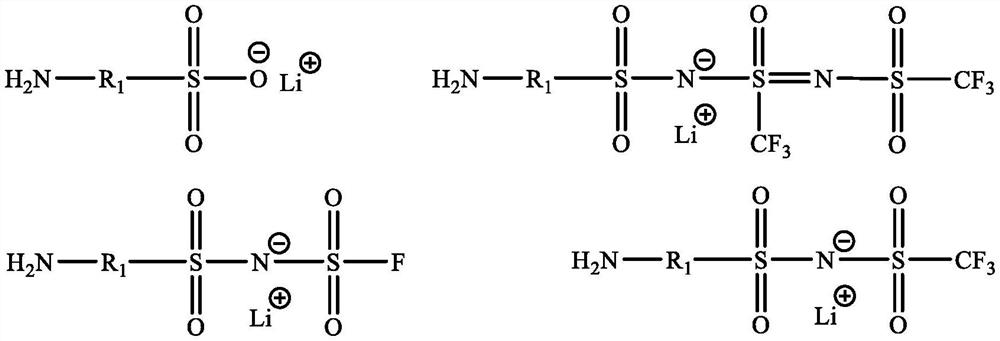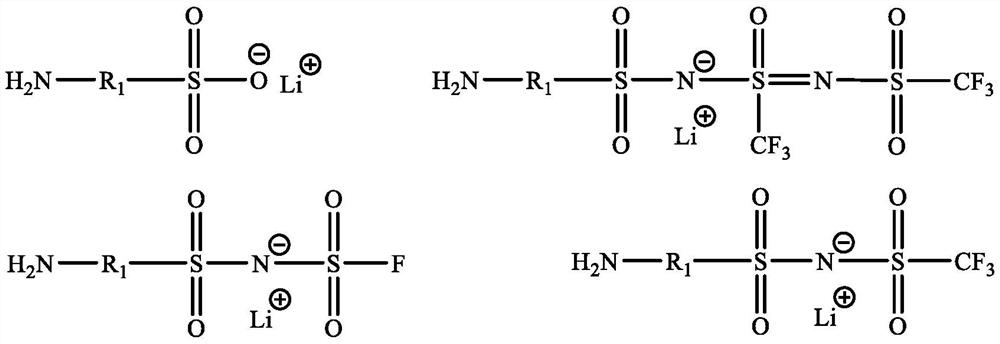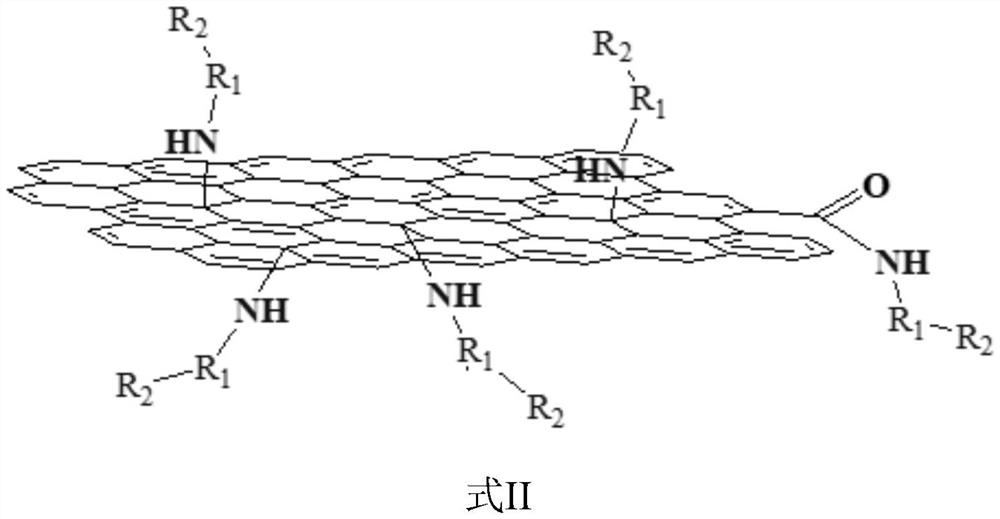Silicon-based material and battery containing same
A technology of silicon-based materials and nuclear materials, applied in battery electrodes, secondary batteries, circuits, etc., can solve the problems of low initial charge and discharge efficiency of lithium-ion batteries, unfavorable rapid charge and discharge of batteries, and poor cycle performance, so as to improve the cycle performance. performance, reduction in volume expansion rate, and effect of high thermal conductivity
- Summary
- Abstract
- Description
- Claims
- Application Information
AI Technical Summary
Problems solved by technology
Method used
Image
Examples
preparation example Construction
[0047]The present invention also provides a method for preparing the above-mentioned silicon-based material. The method includes the following steps: reacting the silicon-based material and lithium salt-modified graphene oxide as raw materials to prepare a lithium-salt-modified graphene oxide-coated silicon-based material. material, and then prepare the silicon-based material through hydrothermal reduction reaction.
[0048] According to the invention, said silicon-based material has the options indicated above.
[0049] According to the present invention, the lithium salt-modified graphene oxide raw material is obtained by modifying graphene oxide with lithium salt.
[0050] According to the invention, the lithium salt has the options indicated above.
[0051] According to the present invention, the number of layers of the graphene oxide is 30wt%. A large number of experiments have unexpectedly found that: according to the particle size and coating thickness of the silicon-b...
Embodiment 1
[0076] Preparation of organolithium salt-modified graphene-coated silicon-based materials:
[0077] (1) Disperse 3 g of graphene oxide in 1 L of water and ultrasonically disperse to prepare a graphene oxide / water dispersion with a concentration of 3 mg / mL. Add 6g lithium 3-aminopropanesulfonylimide (for the preparation method, see "Synthesis, Characterization and Application of New Lithium Sulfonylimide Salt and Research on Its Application to Metal Lithium Secondary Batteries_Ma Qiang") to graphene oxide / water Dispersion, and stirred at reflux at 95 ° C for 12h. Suction filtration, then disperse in water again, obtain concentration and be 1.5mg / mL 3-aminopropanesulfonylimide lithium modified graphene oxide / water dispersion (recorded as LiGO / water dispersion, wherein: 3-amino in LiGO The content of propanesulfonylimide lithium is 28.2wt% (obtained by TGA and gas chromatography joint test));
[0078] (2) Add 0.9985kg of silicon oxide (D 50 8 μm, the shape is irregular particl...
Embodiment 2
[0087] The preparation process is the same as in Example 1, except that LiGO passes through graphene oxide and taurimide lithium (for the preparation method, refer to "synthesis, characterization and application of novel sulfonimide lithium salt and its application to metal lithium secondary batteries." The research_Ma Qiang ") prepared after the reaction (the content of lithium taurimide in LiGO is 32.1wt% (obtained by TGA and gas chromatography).
PUM
| Property | Measurement | Unit |
|---|---|---|
| thickness | aaaaa | aaaaa |
| particle diameter | aaaaa | aaaaa |
| particle diameter | aaaaa | aaaaa |
Abstract
Description
Claims
Application Information
 Login to View More
Login to View More - R&D
- Intellectual Property
- Life Sciences
- Materials
- Tech Scout
- Unparalleled Data Quality
- Higher Quality Content
- 60% Fewer Hallucinations
Browse by: Latest US Patents, China's latest patents, Technical Efficacy Thesaurus, Application Domain, Technology Topic, Popular Technical Reports.
© 2025 PatSnap. All rights reserved.Legal|Privacy policy|Modern Slavery Act Transparency Statement|Sitemap|About US| Contact US: help@patsnap.com



